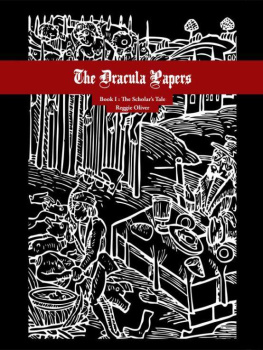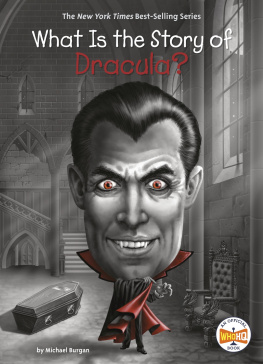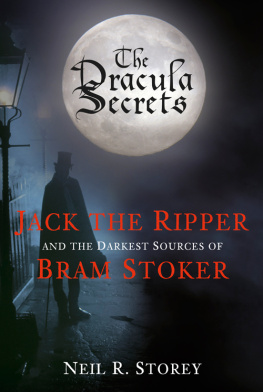
The Dracula Papers
Book I: The Scholars Tale
The Dracula Papers
Book I: The Scholars Tale
Reggie Oliver
Chmu Press
The Dracula Papers
Book I: The Scholars Tale
by Reggie Oliver
Published by Chmu Press, MMXI
The Dracula Papers, Book 1: The Scholars Tale copyright Reggie Oliver 2010
The right of Reggie Oliver to be identified as Author of this
Work has been asserted by him in accordance with the
Copyright, Designs and Patents Act 1988.
Published in January 2011 by Chmu Press.
by arrangement with the author.
All rights reserved by the author.
First Kindle Edition
This book is a work of fiction. Names, characters, places and incidents either are products of the authors imagination or are used fictitiously. Any resemblance to actual events or locales or persons, living or dead, is entirely coincidental.
Design and layout by: Bigeyebrow, Reggie Oliver and Chmu Press
E-mail:
Internet: chomupress.com
Dedication
For Anthony Christian and Marian Fannon
great artists, great friends
Olivers ability to create a sense of time and place in every one of these stories is exemplary.... As a work of spiritual terror it has few peers.... Thomas Ligotti and Matt Cardin are the only authors writing today who equal the assurance demonstrated by the author of this tale in ripping away the veil separating mundane reality from the shrieking abyss it conceals... The Dreams of Cardinal Vittorini is unquestionably brilliant.
Jim Rockhill, All Hallows
Olivers sharp eye for character and ear for dialogue never desert him.... Reggie Oliver rediscovers many if not all the qualities which make the English Ghost Story classic.
Ramsey Campbell, Dark Horizons
Reggie Oliver has a controlled and vivid wit, a precise eye and ear for style, and a powerful sense of the strange.... an infernally talented writer.
Roger Johnson, All Hallows
Contents
Introduction
Three years ago I was in the Czech Republic at a place called Duchov, researching for a biography of Casanova. The great eighteenth-century adventurer spent the last years of his life in the castle of Dux (or Duchov) as librarian to Count Waldstein. It was there that he wrote his Histoire de ma Vie , the masterpiece of autobiography known to the world as the Memoirs of Casanova . Naturally I studied what original Casanova manuscripts remained at the castle, but I also decided to examine all the books in the library dating from Casanovas time. I was looking particularly for volumes which had once belonged to him. It was known that Casanova came to Dux with a substantial library of his own and that these were almost certainly absorbed into the collection at Dux on his death.
It was a huge task, but full of interest. I discovered a number of volumes which had undoubtedly belonged to Casanova. Some had his usual signature, Casanova de Seingalt, scrawled in sepia ink over the title page; some even contained notes in his handwriting. Many of the books testified to his lifelong interest in the occult, and one in particular, a quarto edition of Aldo Sinesiuss De Conjuratione (Antwerp, 1567), was very well thumbed and annotated. But imagine my excitement when, turning to the back cover, I found, inserted into a sort of pocket in the binding, a few sheets of manuscript paper unquestionably in Casanovas own hand.
It is the sort of discovery that every researcher dreams about. I was quite alone in the library. I could have put those pages into my briefcase there and then and walked out with them, though in fact I was not remotely tempted to do so. It was late in the afternoon; soon I would be turned out of the library by the curator and forced to drive the six miles back to my dreary hotel. I began to read frantically, making as I did so a rough translation. Here it is:
There have been many who professed knowledge of ars goetica (the magic art) but most of these were scoundrels and charlatans, and ignorant ones at that. The whole of Paris wondered at Saint-Germain who professed to be two hundred years old and who claimed that no food passed his lips. I knew him at once for what he was, an impostor, for, as the saying goes, it takes one fox to smell another, and I have to say in all modesty that though the soi-disant Count de Saint-Germain imposed upon King Louis himself, I was the subtler fox and possessed a deeper knowledge of the occult arts.
I have in my life met few people with a knowledge of these things equal to mine, and only one with a deeper understanding. It came about during my time in Paris in this way.
On a November evening in the year 1762 I was sheltering from the rain in the doorway of the Caf de la Rgence. I did not wish to go in for I was waiting for the carriage of the Marquise de M. to pass by. The Marquise was being most jealously watched over by the good Marquis and his spies, and the only way we could celebrate a mutual passion undetected was in my ladys coach on the way to the opera. Be that as it may... I shall record my dealings with the Marquise de M. at some other time. As I was waiting I was approached by a tall thin figure of a man wearing a cloak. He began to engage me in conversation and, reluctant as I was for my brain was seething with anticipations of my encounter with the Marquise I responded with as much courtesy as I could muster.
Was I Monsieur de Casanova? I was. The gentleman apologised for thus forcing his company upon me, but he had heard my name mentioned in connection with a divination system using a cabbalistic pyramid of numbers.
He wore a heavy tricorn hat laced with gold, and his face was further obscured by the shadow of the doorway, but I could tell that it was long and thin, the skin waxy and of a strange pallor. It was a face which seemed to lack all animation save for the eyes, which not only glittered but I could have sworn glowed in the darkness. His address was most courteous clearly that of a gentleman and he introduced himself as the Baron de Caulard; but though he spoke French with the fluency of a native, and an educated one at that, there was some indefinably alien element in his accent.
We were soon deep in conversation. His knowledge of every branch of the occult arts was astonishing. I had supposed that my numerical system of divination using a cabbalistic pyramid was my own invention, but he pointed out that a very similar scheme had been devised by Ramon Lull in his Ars Notoria more than four centuries before, a fact which I have since verified. He suggested various improvements and amplifications to my method which I later incorporated to very good effect. So absorbing was our conversation that I quite forgot about the rain, and almost about my exquisite Marquise de M.
Her coach arrived and stopped on the other side of the street, opposite the Caf de la Rgence. Hastily I invited the Baron to come to me the next day so that we could continue our discussion. He said that he was occupied during the day but asked if he might come the following night. I agreed and darted across the road to meet my inamorata. On reaching the coach I looked back, but the Baron was gone.
When I stepped into the coach I found my Marquise in a frenzy of excitement. By the soft glow of the lanterns in the carriage I could see that her pretty face was suffused with the blush of eager passion. As soon as the door was shut and the vehicle was in motion our fevered hands began to explore the tenderest and most intimate parts of each others anatomies. Strangely enough however, perhaps because my mind was still full of the Baron and his conversation, my desire failed to manifest itself in its usual physical way. I could see the disappointment in her face as her fingers found that the object of her longing was only partially awake. My distress was equal to hers, but with a supreme effort of mind I hurled all thoughts of the Baron aside. This was assisted by a sudden lurch of the carriage which threw the Marquise and her petticoats into the most divine confusion, so that I was able to catch a glimpse of... But I must give details of this episode elsewhere.
Next page











